Film is not dead. What started as a claim with a hashtag has become a vivid reality now. And this year will bring us one more new – and potentially exciting – film camera: The Rollei 35AF will be available from October. Let’s consider what we might expect, and what know already know.
The new Rollei 35AF clearly follows in the footsteps of its famous namesake. It adopts the timeless design of this 1966 classic. That’s fine because the later Rollei 35AFM, in my eyes, a somewhat clumsy, wannabe classic camera, actually made by Fuji, wouldn’t have served as a retro role model. In this respect, a good decision to start with.
On the other hand, it has to be said that the new camera bears the great name of Rollei mainly for marketing reasons. The original, Braunschweig-based, Rollei company and its successors have long gone bankrupt. Today, Rollei is a brand name, used by a company outside Hamburg for marketing tripods, LED lighting devices, scanners, and other photographic accessories.
The new Rollei 35 will come from Hong Kong
So, there is no Rollei factory in which the new Rollei 35AF camera will be manufactured. According to Rollei and Mint itself, Mint — a company from Hong Kong — will make the new camera, or have it made somewhere.
Mint is not new to the retro-camera business. The company has carved out a good reputation for restoring and reselling Polaroid cameras. Obviously, they bought the name rights for their latest project from Rollei. To what extent the distinct design of the original Rollei 35, by Heinz Waaske, is still protected, requiring royalties to be paid, is beyond my knowledge.
The looks are so familiar…
At any rate, we will get a new camera that looks a lot like the much-loved classic (read here my side-by-side review of the old analogue Rollei 35 and the very modern Ricoh GR IIIx). The first product images have been published, and it seems the original construction has been carried right into the details. The film advance lever is again on the left shoulder and the rewind crank on the base plate of the camera. The film is inserted by removing the rear part of the camera. And even the two rotating discs on the front for the essential settings are coming back.
New, however, is the lens. The original Rollei 35 first came with a 40/3.5 Tessar lens from Carl Zeiss. Later came an even pricier model, with a faster 40/2.8 Sonnar, produced by Rollei in the factory in Singapore. The new Rollei 35AF will also feature an f/2.8 lens as well — but a 35mm design, and with autofocus.
As the original model always lacked a rangefinder and was reliant on what we now call zone focusing, this is certainly an improvement. Rollei says the autofocus technology is based on LiDAR, so it will not be phase or contrast autofocus through the lens. I, for one, couldn’t have imagined how to integrate a classic autofocus module into the design.
The new Rollei 35AF will be the first film camera with a new autofocus technology
LiDAR is a laser-based technology which is common in many areas. While widely used in drones, classic Photographic applications are rare so far. So the new Rollei 35AF will also be interesting from the technical perspective. Rollei claims the new 35AF is the first film camera to use LiDAR ever. At any rate, focusing a 35mm lens at full f/2.8 aperture at close distance (70cm are specified) is no small challenge.
What’s also new in the upcoming Rollei 35AF? Rollei announced a built-in flash. This one will certainly not be powerful enough to illuminate large rooms, but will be helpful for filling in a bit of light in difficult situations. If the camera has a leaf shutter (1/500 is published as the fastest exposure time), it might even sync with all shutter speeds. This would offer intriguing creative opportunities for sure!
What will the images be like?
What we have to hope for is that the manufacturing quality is good. The old Rollei 35 was legendary in this respect. With the size of a pack of cigarettes, it lies heavy in the hand and feels dense and solid. That’s the standard against which the buyers will measure the new model.
The new Pentax 17 half-frame film camera is not really convincing in this respect. I have held it in my hands, and it felt very lightweight, plasticky and almost like a toy. Very different from what we have seen from Ricoh/Pentax of late. So, a well-built new Rollei 35AF would easily set itself apart.
New Rollei 35AF: What comes next?
The new Rollei 35AF is announced, and pre-orders will be possible from September 10. Shipping is promised for October. The price of the new camera will be €849 in Germany. That’s no bargain, and you can get a recently CLA’d original Rollei 35 for much less. But that would feature neither built in flash nor autofocus, and also no modern OLED illuminated function button or auto exposure. I would not be surprised if the remake of such an immortal classic becomes a huge success.
I wrote about an original Rollei 35 (very original, from the early Made in Germany series) and a very memorable trip with this beautiful camera here. You can imagine how excited I am personally – and how big my disappointment might be. But for the moment, I am very optimistic. And I hope I can report back once I have been able to use the new Rollei 35AF in real life.
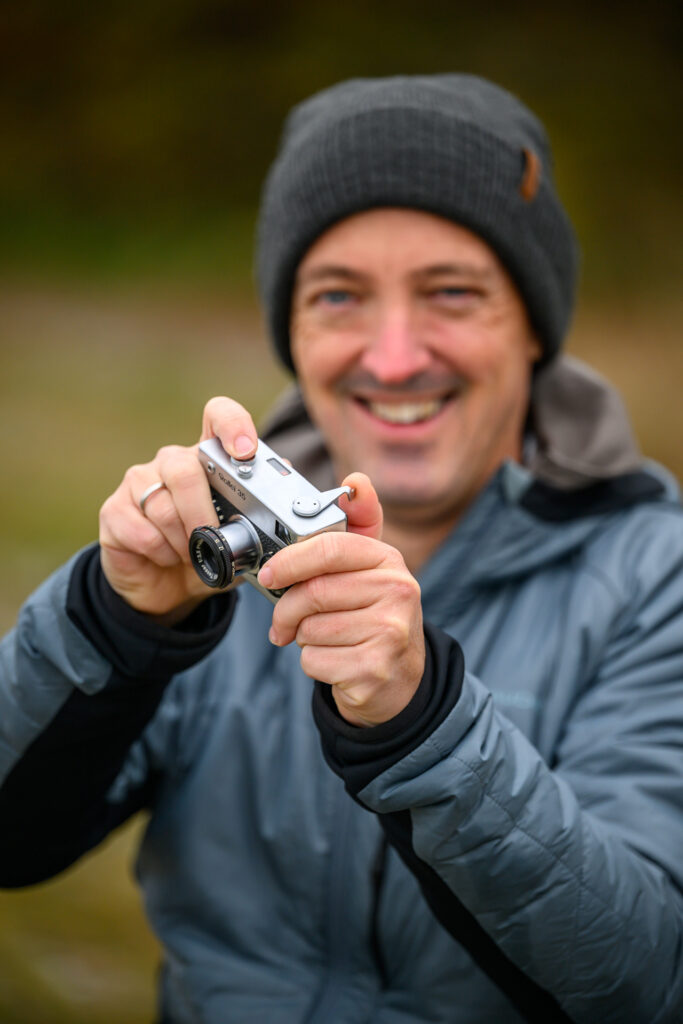
What do you think? Is a new and modernised Rollei 35 what the market is waiting for? Or will it be the next toy for hipsters who will soon lose interest in the camera? Will the announcement encourage owners of the many original Rollei 35s which are still around to try them out again? Or is film photography not as alive and kicking as it is claimed? And, finally, are you a candidate for Rollei’s waiting list? Let’s discuss!

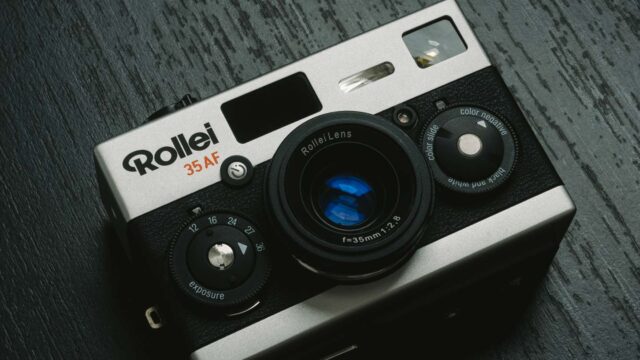

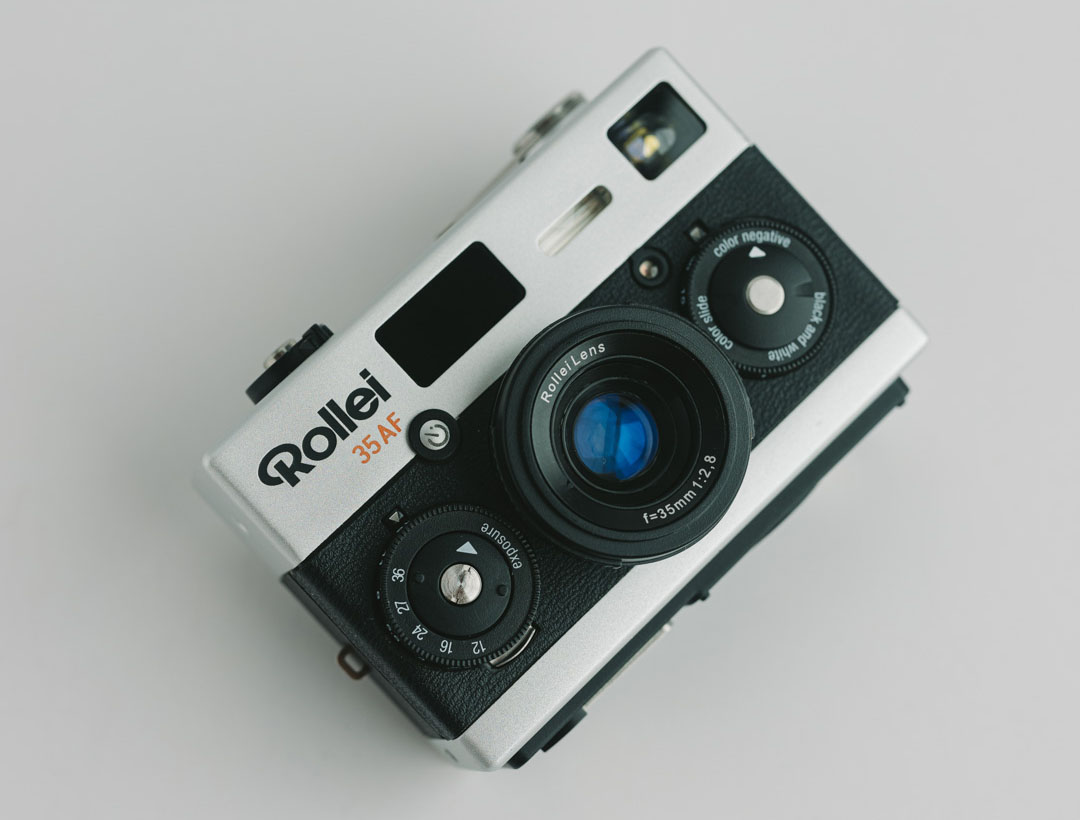






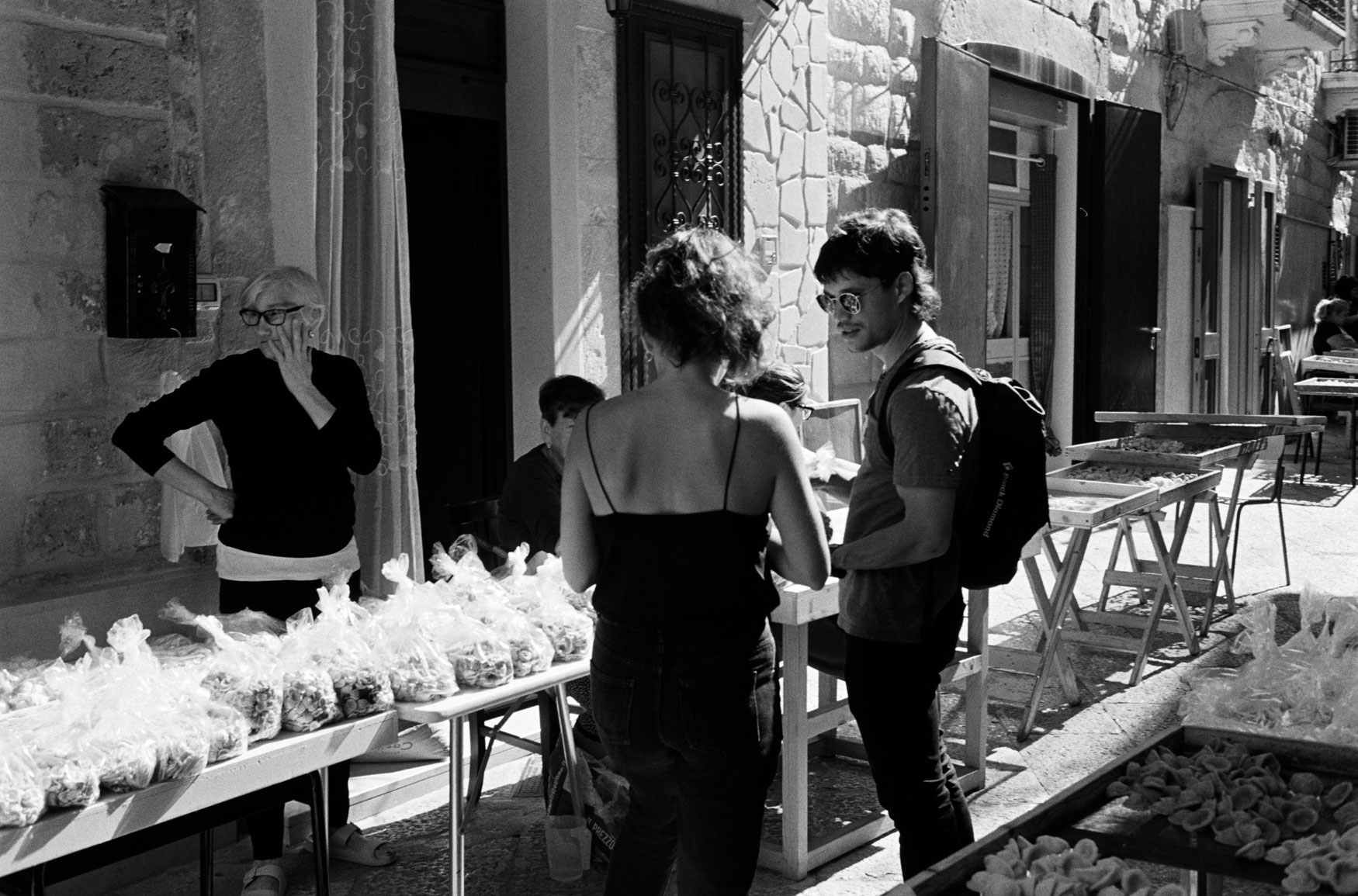



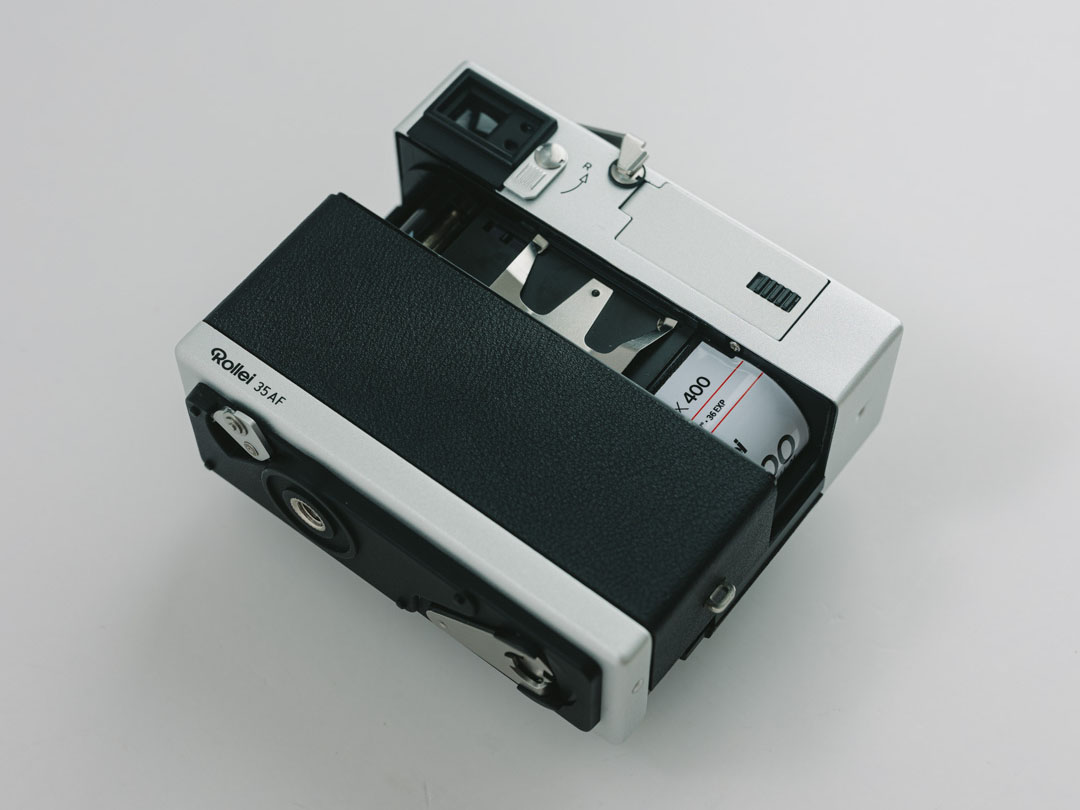





I have absolutely no interest in Lidar lasers in a camera. Leica seems to be the only one with good sense in film cameras today. We will see what Pentax does in the future — I have too many objections to aspects of the 17 to think it is a good option.
Thanks for the article Joerg-Peter. The Rollei 35 is a beautiful camera and that 40mm Tessar lens is wonderful. I bought one some time back which has been CLA’d by film furnish just on its looks alone figuring I’d like it on the shelf, just to have.
It’s become my film daily drive now and I use it all the time. In fact, I’m taking it kayaking this morning in a waterproof otter box. I started out just shooting black and white film which I develop myself, and now put all my favourite colour stocks through it like Ektar and Kodak Vision 3 as well. Being so small and compact when the lens is folded away, there’s absolutely no excuse not to have a camera with you.
I’m also intrigued to see what the new AF model is like and look forward to handling one. I also really like the look of the new Pentax 17, just wish it wasn’t half-frame though I thoroughly understand why they did that.
It’s great to see so many people shooting film again… #filmisnotdead ! 🙂
Dear Röd, thanks for your feedback. I think there are many reasons to go for the original Rollei 35. I am very curious about the build quality of the new version. The Pentax 17 was a bit disappointing in this respect. JP
Looking forward to this camera!
I owned a Rollei B35 over fifty years ago, it was a beautiful little camera that produced sharp negatives and I only shot in black and white. It was a joy to use, the zone focussing work well and I never had any out of focus issues. The built in selenium exposure meter worked fine. For its price and specifications it was a very light and pocketable all round camera.
Thanks, Michael Brian, for sharing your experience. The Rollei 35 had and still has many fans. Rightly so, I would say. I knew several photographers who used it for slide film which as to be projected in massive sizes, and all with excellent results. I wonder how good the new lens will be… JP
I want to buy one!
It looks rather, er, ‘chunky’ ..not quite so svelte as the original, and it appears rather like the plasticky imitation ‘Yashica’ which I bought via crowdfunding: good fun, but not a patch on the original.
And that laser-based focusing ..I wouldn’t hold your breath about its accuracy or the lens quality.
I’ve bought a few of these ‘retro’, or ‘repro’, ‘re-envisioning of..’ or ‘hommage to..’ modern versions of golden oldies (..’I’m Back’ digital back for old film cameras, etc..) but none of them – so far – has ever fulfilled any possible promise; they’ve been fun artefacts to play with, but I really can’t see this going anywhere serious.
I think it’ll be a jolly, make-believe, use-for-a-month-or-two toy ..you know, a bit like those Holga cameras which were in vogue for a while, but now seem to have disappeared ..except on eBay. What was the name of the ..you see? ..can’t even remember what they were called.. ah; ‘Lomography’ cameras. Anyone still using one? (..I use the film; it’s pretty good for the price, and the 110 b&w cassettes nicely fit in my – whoa! Rollei! – teeny-weeny A110 pocket camera ..which I do still use ..sometimes.)
Q: “..will it be the next toy for hipsters who will soon lose interest in the camera?” ..er, Yes.
But what do I know?
What do I know? Nothing, to be honest. I’m not a hipster at 67 years old – but I’m happy about this new camera and I’ll have a laugh at it. I think it’s wonderful that devices like this are being built again alongside all the digital junk that is presented to us every day…
All the d.. all the d.. all the..”d-d-digital junk”?!
I’m trying to think of any recent “digital junk”.. er, Canon? Nikon? Olympus? Panasonic? Sony? Fujifilm? ..Oh, you must mean the shoot-in-absolute-pitch-blackness Duovox Night Vision camera, possibly. Or the £39.99 Amazon Kids’ Digital Camera. Or the £19.70 Amazon Beginners’ Digital Camera? Or the £54.39 Stuogyum 4K Autofocus Vlog Camera HD 48MP With 7.11cm Large Screen Camera, perhaps, from Temu.
Otherwise, I can’t think of any digital junk.. d’you mean that recent Leica D-Lux 8, perhaps?
Most honoured Mr. David B.
Most of the electronics built in modern cameras are junk ,very few people would pay the amount of money that’s necessary for building reliable electronics. Camera manufactures are forced to produce electronics in the quality that we (I am a military electronic engineer)normally state as entertainment electronics. Most cameras are not built to live such a long time as the old mechanical cameras. When I was presented, by my mother, with my first Leica, the advertise stated Leica for lifetime. This was actually true for my first Leica because the first repair the camera needed was after 48 years where a new shutter was needed. The camera survived a helicopter crash in Vietnam three wars my rough use and is still operational and is able to take pictures without a new firmware or is dependent on which operating system my computer is working on. My first digital Leica lived three years before a new sensor was needed. The problem with these cheap electronic circuits is that the components are not manufactured after a few years. A great deal of them in from the far east. Regrettably, there will for sure be in the new Rollie 35 AF Camera, cheap electronics. Nobody could put AF and shutter control without electronics in such a small camera. So I agree with Mr Hans-Peter Huser we do not need all this electronic junk in our cameras. And yes, you are right they are in all cameras even the Leicas. We are amateurs and amateurs have all the time in the world to use our brains and creative skills.. Some other fun things of making photographs is to consider how we want the picture to look like. We don’t need an electronics to tell us what to do. All the pictures will look the same when we rely on these electronics. How difficult is it to have 3 degrees of freedom: shutter time ,aperture and distance? We really don’t need an electronics for such a simple matter. And another problem is how can we read electronic pictures in 100 years?
Best
Paul de Kruiff
You are right, of course. No consumer product can be made to the standards of EMP-resistant military hardware and still sell. That is why Nikon insisted for decades on putting the electronics in a replaceable finder, instead of the body, of their top-of-the-line professional cameras.
The problem was, even though a Nikon F2 body will last practically forever, what is the point, when photographic technology is continuously changing. One can find many Nikon F2 finders for sale, but what percentage is the meter still working? Same holds true for those who say, why not just by an original Rollei 35?
Personally, I would have preferred a full-frame digital Rollei 35 reproduction.
Oh, I agree entirely, Paul ..except that “..We really don’t need an electronics for such a simple matter. And another problem is how can we read electronic pictures in 100 years?” ..that’s because I don’t think that – in a few more years – there’ll still be firms making light-sensitive film, nor companies making the chemicals to develop light-sensitive films.
So then what will we – or they, after I’ve gone – use to take, or make, our ‘photographic’ pictures?
It’s all very well for a mechanical camera built in, say, 1923, to have lasted 48 years, because it consisted of a few gears and springs (I’ve some old cameras like that); it might need a drop of oil occasionally, and – as you say – new cloth shutter curtains after a few decades, but if built solidly it might last a hundred years (depending on how much use it might get).
But – as you know, being a military electronic engineer – times have moved on. We now have jet airliners, we now have transistors to (often, but not always) replace glass-and-metal electronic valves, we now have Magnetic Resonance Imaging hospital scanners. New inventions come ..and are then superseded by even newer inventions.
A Leica from, say, 1923, may still survive another century ..though the owner would be lucky to get replacement shutter curtains, I think, in 2124.. but will it still be useful? ..Will there still be film to use with it? Will there still be record-players to play those old 78s? ..or even those old 45s, or those old ‘Dark Side Of The Moon’ 33⅓ vinyl discs? ..or those old 5¼-inch floppy discs? Or CDs? ..or those old and now obsolete Fujifilm ‘SmartMedia’ memory cards (remember those?)
The BBC stopped using high-speed metal ‘tape’ – at 60 inches per second – years ago, and stopped using disc-cutting machines, and has stopped using quarter-inch tape machines: they’ve been thrown out, donated or scrapped. Studer doesn’t make tape recorders any more ..only a couple of weird ’boutique’ nostalgists still do.
We move on.
You say that your “..first digital Leica lived three years before a new sensor was needed”. My M9, too. [Though it wasn’t my first digital Leica; my Digilux 1, Digilux 2 and Digilux 3 are still going strong. But that M9 sensor was an aberration.]
“..The problem with these cheap electronic circuits is that the components are not manufactured after a few years.” True, but neither are most of the valves from 1950s radio sets. And do you know anyone nowadays who can repair wooden cart wheels?
The world moves on.
“..the components are not manufactured after a few years. A great deal of them in from the far east.” What does it matter where they’re made? Leicas nowadays are made in Portugal, for years they were made in Canada. Most TVs, and TV cameras, and the hardware used to create TV programmes, are made in “..the far east..” and have been for very many years. So what’s the matter with items which are made in the far east? Mike Evans – our editor’s – car was made in the far east. Does that mean that it’s any less of a car, nowadays, than one made in Britain, Germany, Brazil or South Africa?
To come back to your final point, that we “..really don’t need an electronics for such a simple matter”.
Well, I think we will when there are no more film and chemicals to use. So we need to get ready for when that moment arrives. Or we’d be left with wonderful old antiquities, such as screw-fit Leicas, and Fotons, and Kodak Brownies, just adorning our mantlepieces – if we still have mantelpieces – but with no way to use them. Wouldn’t that be sad?
But who takes photos with electronic sensors anyway, when we can use ‘MidJourney’ to create pictures of whatever it is that we can dream up?
Yours, David.
P.S: Oh, I forgot to say; those long-lasting old Digilux 1, Digilux 2 and Digilux 3 were, of course, made in “..the far east”. Like the compact pocket Leicas.
‘Leica’ is, as, of course, you must know, just a brand name.
I love my Rollei 35 “Made in Germany”. Let’s wait for the actual camera before we ventilate our opinions, only based on a few pictures.
no joy here…
Thanks, David, for replying. I think we can (and may) judge once we have the camera in our hands, both on build and image quality. JP
As mentioned in the bio of Waaske, he tried to interest the Leitz company in making this camera, to no avail.
If he had succeeded, it would have been like a metered Leica I(A) in many respects. I used the original Rollei for many years, and when I came to write something about the Leica I(A) years later, I found myself saying “now where did I run up against this concept before?”. Pocketable, fairly slow lens needing to be pulled out, scale focus, somewhat squinty viewfinder. Of course there was a meter and a lever wind.
I eventually sold the little Rollei, bought a used Minolta CLE, which with its 40mm lens was only a bit larger, then was off to the Leica races because of my photographic results.
Thank you for the memory. I wish to new product well.
Ed
The problem with these retro products is..they are never built to the same quality standards as the originals which are still available and still usable some 40 or 50 years later.You can buy something like a used Leica CL or original real Rollei 35 and still get great results. Will this new ‘Rollei’ imitation last even 10 years? I also wish the new product well though, it’s always good to see a continuing interest in film.I’m not surprised that Leica wasn’t interested in making it. They aren’t even interested in their own CL line which as we all know was given the chop twice.
Hi Stephen, I understand your doubts, and I am also wondering if the new Rollei 35 will be well-built. We have seen light an shadow with such manufacturers. The Thypoch Simera M-Mount lenses, for example, are excellent at a fraction of the price the lens would necessarily cost when made in Europe. Other manufacturers are less fortunate. And you are certainly right that getting service or spare parts for the new Rollei 35AF might be difficult in 20 or 30 years. JP
In the 70’s and ’80s I had a 35S. A great, high quality pocketable camera that was simple to use. Just set the focus distance, and set the aperture and shutter speed using the simple meter. Perfect for street shots from the palm of your hand.
For the next iteration, with the advent of digital sensors, it makes abundant sense to do AF and aperture priority AE and keep the camera simple and small.